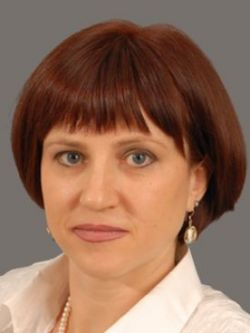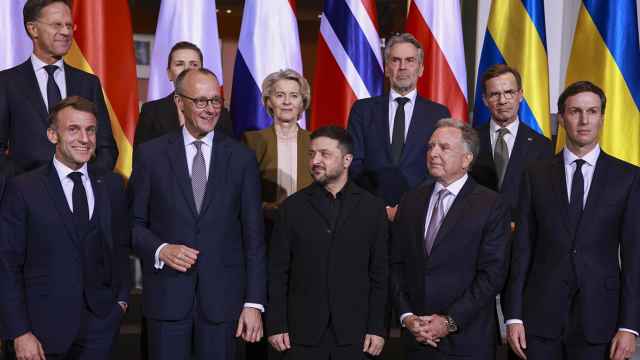
Larisa Lysenko
Senior Associate / Trademark Attorney
Goltsblat BLP
The last financial crisis demonstrated that the problem of overfilled trademark portfolios has affected, in economic terms, not only big international corporations with a portfolio of several thousand trademarks but a number of Russian companies as well.
One of the conditions for cutting the costs of maintaining a portfolio is its optimization and alignment with reality.
You might ask why something that thrives in favorable times of fast-developing business became a real financial problem during the crisis.
It is natural for each company to seek maximum protection of the intellectual property created, including trademarks designed to promote the goods of a particular company and contribute to distinguishing them from similar products of a competitor.
In an effort to maintain interest in the company's goods and to increase sales, businesses constantly expand their product ranges by adding new tastes, changing external packaging and varying the color range or arrangement of some elements on the packaging. This involves investment not only in developing the product itself but also in protecting the relevant intellectual property.

Anton Nefedev
Associate
Goltsblat BLP
Expansion of a company's product range entails an increase in the number of trademarks included in the portfolio. This, in turn, engenders a situation in which the number of trademarks may exceed the quantity of the products marked by them many times over.
For certain objective and subjective reasons, many companies are sometimes reluctant to give up moribund trademarks that, some time ago, brought in sizable profit and then begin aggressively swallowing it up.
During a crisis, competition between companies and products soars and overgrown trademark portfolios get out of control, constantly demanding financial commitments for maintaining the trademarks in force, monitoring competitors' activities and defending violated rights.
The inertia of a big corporation resulting from a number of internal policies precludes it from responding rapidly to a changed environment. Advantage of this is taken by companies with a more flexible approach to business management.
Slow decision-making within corporations can cause products that have a high reputation and sell well to become vulnerable due to unfair competition.
As a general rule, companies that own trademark portfolios rarely use them themselves; more often, they dispose of them by granting licenses. Registration of any fundamental amendments to a license agreement is obligatory under the effective Russian IP legislation.
Yet, more often, they are not embodied in the agreements. Neglect to do this is usually used by interested parties in an attempt to terminate trademarks early on the grounds of their non-use or improper use.
Thus, the number of trademarks ceases to be an advantage to the company and they lose their main function — to generate profit, becoming dead wood for which the company still has to pay.
As a result, companies emerge on the market with similar products, register trademarks similar to the recognized ones of successful corporations, named differently but preserving a visual similarity, and succeed in getting unused or improperly used marks that get in their way terminated early.
Similarly, big companies are forced to spend money for "dead wood" instead of current needs. Unfair competitors, in turn, promote their business by means of the other company's expenses and efforts.
From the point of view of the legislation, a trademark should be used intensively and should generate profit, otherwise it should be abandoned to give way to newly developed marks.
The described problem of trademark portfolio optimization is not a new one but, in favorable times, little attention is paid to it. In a crisis, it becomes vital owing to cost sensitivity.
One regrettable example consists in loss by the federal state enterprise Soyuzplodoimport of four combined trademarks (brandy labels), incorporating the word elements Moskovsky (in Latin and Cyrillic scripts).
Properly registered license and sublicense agreements, reports on volumes of goods manufactured and other documents, as well as actual goods presented by the trademark owner as proof of their use to the Chamber for Patent Disputes and, later, the courts did not prevent the enterprise losing them.
The trademark owner applied maximum efforts to protect it and took the matter to the Supreme Arbitration Court, yet was unsuccessful. Apparently, the reason for this was a discrepancy between the registered trademarks and those used on the goods on the market.
The following remedies are available in such a situation:
- regular (at least once a year) audits of the trademark portfolio.
- elaboration of internal company policies for correct use of trademarks (meeting the requirements of both the legislation and business).
- elaboration of policies for proper arrangement and control of licensing.
A Message from The Moscow Times:
Dear readers,
We are facing unprecedented challenges. Russia's Prosecutor General's Office has designated The Moscow Times as an "undesirable" organization, criminalizing our work and putting our staff at risk of prosecution. This follows our earlier unjust labeling as a "foreign agent."
These actions are direct attempts to silence independent journalism in Russia. The authorities claim our work "discredits the decisions of the Russian leadership." We see things differently: we strive to provide accurate, unbiased reporting on Russia.
We, the journalists of The Moscow Times, refuse to be silenced. But to continue our work, we need your help.
Your support, no matter how small, makes a world of difference. If you can, please support us monthly starting from just $2. It's quick to set up, and every contribution makes a significant impact.
By supporting The Moscow Times, you're defending open, independent journalism in the face of repression. Thank you for standing with us.
Remind me later.





